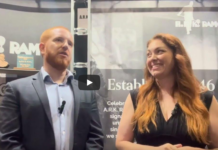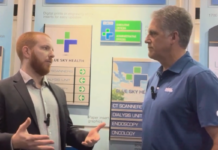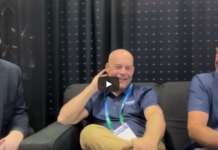 Like it or not, sales prospects do not make decisions based on reason; instead most people make decisions emotionally and then support their decisions with facts. That is why you must first identify the prospect’s most salient emotional needs and desires in your initial sales meetings and then construct a sales argument which not only appeals to those needs but provides evidence and justification for the prospect to make a decision.
Like it or not, sales prospects do not make decisions based on reason; instead most people make decisions emotionally and then support their decisions with facts. That is why you must first identify the prospect’s most salient emotional needs and desires in your initial sales meetings and then construct a sales argument which not only appeals to those needs but provides evidence and justification for the prospect to make a decision.
To help your prospect justify his or her decisions, your sales case must provide evidence. This evidence may take many different forms. Storytelling is one of the most effective techniques here because:
- It provides factual cases, which support our assertions;
- The prospect can relate to events, which are similar to our own experiences; and
- Who doesn’t love a good story? If your story contains an emotional element, it touches the heart of the listener and sticks in their memory. (Remember: People usually make decisions emotionally then justify them through rationalization.)
You should also structure your proposal using a problem/solution format. Early in your proposal, you must identify your prospect’s specific problems, goals, and unmet needs. Subsequent sections of your proposal should explain how your graphics program solves those problems, satisfies your prospect’s business objectives and needs, and provides value.
Writing stories about the graphics programs that you have developed and have had an impact on your customers’ businesses can be extremely effective. You can use these stories in sales proposals, newsletters, or on your Web site, as well as in postings on your blog and social media channels. Make sure all of your claims are truthful and that you have not exaggerated in telling your story because some readers will contact your customers.
In selling graphics programs, a testimonial from previous clients about projects done for them provides extremely strong, persuasive support.
You can also use photographs as evidence to support your claims. For example, instead of telling a prospect that their corporate identification is inconsistently applied, take pictures that illustrate your assertion.
In selling a municipal bus line a graphics program, I took photographs of the transit system buses in which the word “SYSTEM” was spelled “SISTOM,” “SISTEM,” “SYSTIM,” and “SYSTOM.” Until I incorporated those pictures in my sales proposal, no one had ever noticed the misspelling. Those pictures made an impression and helped me close the sale. (Note: Be sure to not misspell any words in your proposal!)
Instead of explaining to a marketing manager that his graphics are chipping and peeling, provide the prospect with photographic evidence. In my experience, corporate executives rarely inspect their vehicles and are oblivious to any problems that are occurring. Even if an executive were to inspect his fleet, he may not recognize these problems, and here is where a picture truly is worth a thousand words.
If pictures are worth a thousand words, video clips are worth millions. Rather than just talking about what your prospect’s competitors are doing in their vehicle or building graphics programs, show this to them using video.
In today’s digital world, presenting evidence in your sales presentations has never been easier. As you conduct a vehicle survey or site survey, you can take video clips of your findings, which you can narrate. As a form of testimonial, short video clips featuring satisfied customers speaking about their successful graphics programs has much more impact than either an article or a photograph.
The final form of evidence is written documentation. This could include industry statistics, magazine articles, and research reports. Prospects often will not believe what a salesperson says. They will, however, believe the written word, and that is why people ask you to put your promises in writing.
As graphics professionals, sign makers often talk about the visibility of vehicles travelling in urban areas and over the open road. Many years ago, 3M™ funded a study that quantified the effectiveness of truck advertising in traffic. That study documented the number of visual impressions that vehicles generated. I frequently used that study to justify the cost of graphics programs in terms that rang true for an advertising or marketing manager. I would compare the cost of a thousand visual impressions for fleet advertising to the cost of impressions for radio, TV, and print media. Statistics are hard to argue against.
You may question the value of a written proposal, but if you are competing for a large program of a large- or intermediate-size corporation, you may not have access to the ultimate decision maker or all of the influencers within that organization. A written document makes your case for you, when you cannot make your case in person.
When I was a graphics salesman, I had my best success when I prepared written proposals that provided prospects with overwhelming evidence (relevant testimonials, pictures, statistics, and documentation) to support my case.
While I still believe that hard copies of your proposals are effective, you may want to consider presenting your prospects with proposals as electronic documents, which provide links to many different forms of evidence including industry reports, video clips, and news articles.
Your proposal should be long enough to cover your argument yet short enough to maintain interest. I often wrote very long proposals that covered all of the specifications and details of design, manufacturing, and installation. As best as you can, write your specifications in such a way that it will be very difficult for your competitors to reproduce.
For example, if your manufacturing process includes some unique process that sets you apart from other shops, include that in your specification (maybe you have a UV-LED printer, a flatbed, or a direct print system that your competition does not have).
When you meet with the prospect, review the document with him or her. In some rare cases, a prospect will challenge you about the necessity of reviewing a long document. If you face this challenge, explain that your proposal constitutes a legally binding contract; it outlines your obligations in fulfilling your agreement, as well as your personal commitment to the success of the program.
At the end of your review of the proposal, always conclude by asking for the order. If you are uncomfortable in closing a sale, try using the contingency close, an approach that has worked for me. Just state, “Why don’t we proceed with the program making the order contingent upon your approval of full-size art? If you do not approve the art, you are under no obligation to proceed further and the order is cancelled.”
Using this closing technique puts much less pressure on the prospect to make a decision. In my experience, I never had a customer cancel the order, although I frequently had to make changes to the full-size art. In most cases, the artwork for vehicle graphics often looks much smaller when taped to the side of a trailer. Generally changes involved increasing the sizes of the graphic elements.
As these design elements increased in size, I also increased my profit margin in my revised pricing. If the customer has conducted an exhaustive analysis of prices, it is highly unlikely that he will send the job out for requote as he makes changes.










